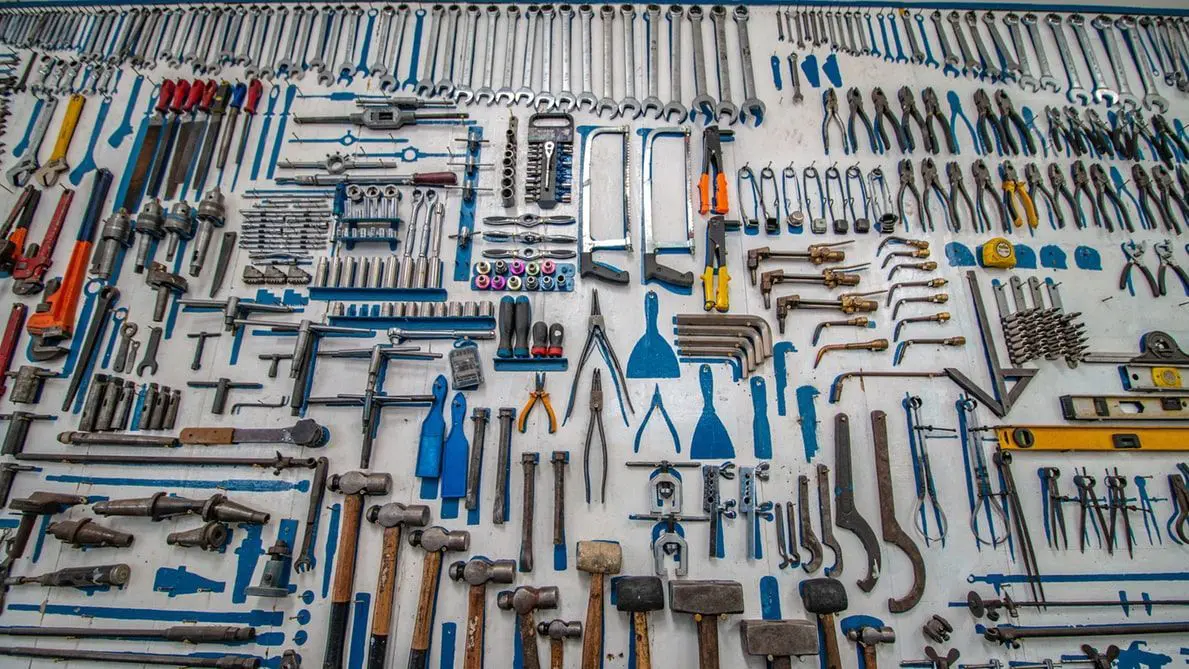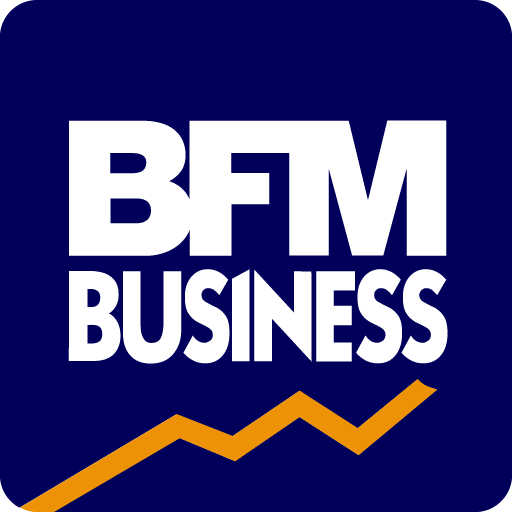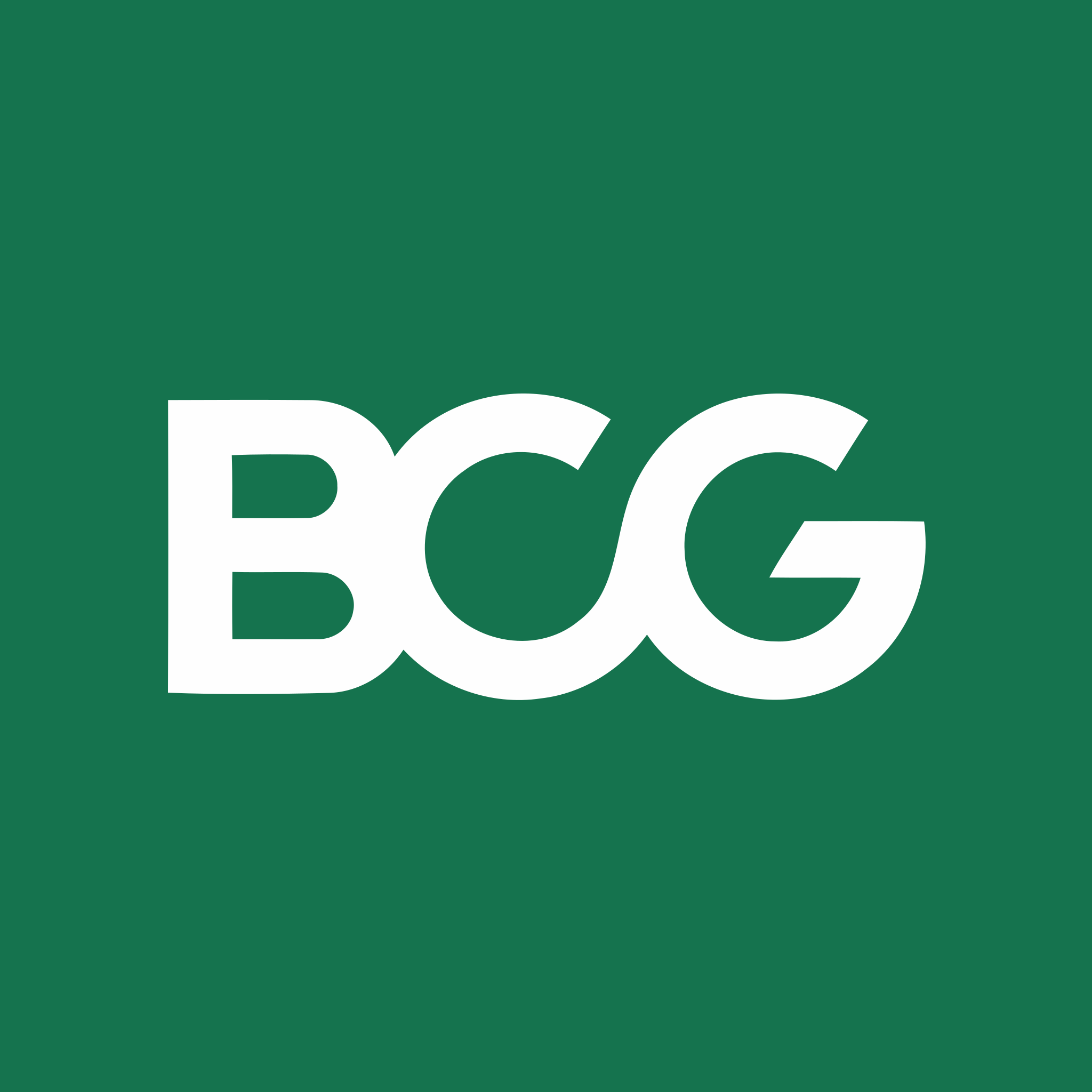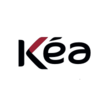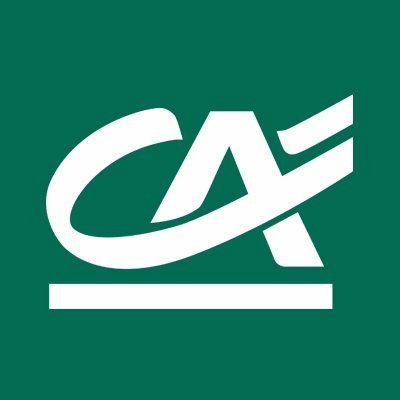Summary of our market study
In France, the DIY market is estimated at €38 billion in 2023.
The global DIY market has grown steadily, with the sector estimated at over $850 billion.
In France, after years of stagnation, the market boomed during the pandemic period. During this period, DIY stores remained open. The market levelled off in 2023 and is now in slight decline.
The DIY market is also buoyed by the boom in sales of older homes, as new owners undertake renovation work themselves.
changing consumer trends in the DIY market
Consumer profiles have evolved towards a younger, more affluent clientele.
Do-it-yourselfers living mainly in rural areas and do-it-yourselfers and decorators in suburban areas are the dominant consumer segments.
45% of individuals engage in DIY projects at least once a month or several times a year, and 21% engage in DIY projects every week. And 20% engage in DIY strictly out of necessity.
DIY purchases are prompted primarily by the pleasure they bring, the need to make repairs, or budgetary constraints. The pleasure factor increased by 3%.
Market leaders
- Groupe Adeo - brands t Leroy Merlin, Weldom and Bricoman.
- Kingfisher - subsidiaries Castorama and Bricodépot, ScrewFix
- Les Mousquetaires Intermarché - with their Bricomarché and Bricocash banners
- Mr Bricolage Group and its affiliate Briconautes
to understand this market
Detailed content of our market study
 Inforamtion
Inforamtion
- Number of pages : 35 pages
- Format : Digital and PDF versions
- Last update :
 Summary and extracts
Summary and extracts
1 Market overview
1.1 Definition and scope of study
Do-it-yourself refers to the non-professional manual activities of repairing, creating, improving and maintaining small household objects. This study focuses on the consumer DIY market, and therefore excludes the BtoB activity of DIY stores and DIY superstores.
The DIY market therefore covers a wide variety of items. There are 11 main categories: building, plumbing/sanitary, garden, paint/glue, wood/woodwork, coatings, tools, electricity, hardware, decoration and thermal comfort.
These various products are produced in France or imported, and then distributed by DIY superstores (GSB), retailers, digital pure-players or food superstores (GSA). In France, however, DIY distribution is highly concentrated, with GSBs accounting for 71% of sales by value. The main players in the sector are the 4 Adeo groups (Leroy Merlin, Weldom, Bricoman), Kingfisher (Castorama, Bricodépot), Mousquetaires (Bricomarché, Bricocash, Bricorama) and Mr Bricolage (Mr Bricolage, Briconautes).
The French DIY market is the third-largest in Europe, behindGermany and the UK. on a global scale, however, the United States dominates, accounting for around half the market by value. Estimates suggest that the global market will continue to grow over the next few years, at a CAGR of 4.37%.
The French DIY market, meanwhile, is forecast to increase sales by 12% in 2023. This growth is due in particular to the economic recovery in the construction sector and the rise of the "Do it yourself" trend.
1.2 A growing global market concentrated in North America and Europe
the global DIY market was estimated at US$*** billion in ****, and is growing slowly but steadily. Global DIY market size World, ****-****, in billions of euros Sources: Fediyama, DIY International The chart below details the breakdown of the market by region in ****. North America and Europe hold the majority of the sector's market share, while the population of both regions represents only around **% of the world's population. In fact, North America and Europe accounted for **% of the market in **** (***). [***] DIY market share by continent World, ****, in % [Ar-shelving Source : Edra The geographic concentration of the market is all the more evident given that just * countries account for approximately **.*% of the market: the USA, Germany, Canada, Japan, the UK, France, Australia and Italy. The USA dominates the market, with sales approaching half of the global total.
The top ** players in the sector worldwide are : Home Depot (***). [***]
1.3 French market grows despite lower sales volumes
French DIY market size France, ****-****, in billions of euros Source: ****
In ****, the French DIY market was estimated at nearly ** billion euros, representing a growth of around **% compared to ****. [***] The DIY market has been growing slowly for several years, but sales by value continue to rise.
French DIY market trends France, ****-****, in Source: ****
Penalized by the crisis of **** and by the sluggishness of the construction market, which began to recover around ****, the DIY market's dynamism remained limited, before finally returning to more significant growth, as evidenced by performance as of ****. This growth is being driven by a number of factors, including the upturn in the construction sector, with record sales of older homes in ****[***].
Falling sales volumes:
In ****, INOHA launched a volume observatory to monitor changes in the volumes marketed by manufacturers over time. Conducted quarterly among INOHA members, the study reveals that over the course of the year, value increased by *%, while volumes fell by **% on average. The second quarter saw the sharpest drop in volumes, reaching -**%, before stabilizing in the fourth quarter at -*%. [***]
Sales volume and value by department France, ****, % [Inoha Source : Inoha In ****, the DIY market in France experienced contrasting dynamics. While sales value increased ...
1.4 The double effect of Covid-19
While the DIY market had started the year well, with a year-on-year increase of +*.**% in value and +*.**% in volume in February ****,the Covid-** crisis interrupted this momentum.
The effect of the Covid-** epidemic and containment was twofold. On the one hand, containment led to a sudden slowdown in activity in the construction sector, and eroded household purchasing power. The paralysis of the construction sector, which usually stimulates DIY purchases, had an immediate effect, as the value and volume of DIY sales plummeted during the confinement. However, at the same time, the French developed a taste for DIY, which stimulated post-confinement purchases, which are partly due to a catch-up effect but could herald a strengthened DIY craze.
On the one hand, the slowdown in economic activity has penalized both the construction sector and household purchasing power, both of which influence DIY purchases. Indeed, household purchasing power contracted by *.*% in the first quarter of **** and by *.*% in the second quarter. [***]
On the other hand, the confinement encouraged the French to do DIY, as **% of those surveyed said they did more DIY after the confinement than before, with **% having not changed their habits and *% having reduced their DIY activity. [***]
The French craze for DIY ...
2 Demand analysis
2.1 Consumer profile
According to an Opinionway study, in ****, * out of ** French people will be passionate about DIY
Distribution of DIY enthusiasts by gender France, ****, % of total Source: ****
In ****, in France, the breakdown of DIY enthusiasts shows a slight gender difference. Men account for a slightly higher proportion of DIYers, with **% of men claiming to engage in DIY activities, while this figure is slightly lower among women, with **% involved in DIY projects.
Distribution of DIYers by age group France, ****, % (***) Source: ****
In ****, in France, the distribution of DIY enthusiasts varies according to age, according to the data collected. Young adults aged ** to ** represent a significant proportion of do-it-yourselfers, with **% of this age group declaring that they do DIY. This trend continues in the next age group, **-**, where **% of individuals are engaged in DIY projects.
These figures indicate a high level of DIY participation among young adults, which can be attributed to various factors such as the rise of online tutorials, interest in DIY (***) and the desire to learn new practical skills.
Profile of DIY consumers France, ****, in Source: ****
In addition, it is possible to identify three main DIY consumer profiles: Exclusive do-it-yourselfers, mostly rural, living in a house, CSP+, graduates, elderly Do-it-yourselfers and decorators, ...
2.2 Typology of demand
Reasons why the French do their own work France, ****, % of total Source : OpinionWay In **** in France, a large majority of citizens opt to carry out their own home improvements to save money, representing **% of respondents. This figure reflects a strong economic concern among consumers. At the same time, a significant **% of French people declare that they carry out their work themselves, out of a taste for manual activities. This statistic underlines the growing interest in DIY and renovation projects as a leisure activity or passion among a significant proportion of the population. Overall, these figures reflect a trend towards autonomy and personal involvement in building and renovation projects, motivated both by economic considerations and by an interest in practical, hands-on activities. These data highlight the importance for companies in the sector of offering products and services that respond to these two key consumer motivations:the need to save money and the desire to engage in creative, hands-on activities.
Main purchasing criteria for DIY products France, ****, in Source: ****
While pleasure often explains the intention to do-it-yourself, it's price that has the greatest influence on converting intention into purchase. Indeed, price is the main criterion for purchase, cited by **% of respondents. The second ...
2.3 Demand trends: from DIY to second-hand
In many sectors (***) trend is growing, as are second-hand purchases and sales, to such an extent that the trend seems to be taking root in the habits of many French people. The success of the homemade and collaborative economy can be explained by the growing awareness of the French of environmental issues and the desire of many individuals to reduce their consumption.
By ****, **% of the French population will have carried out DIY-related activities, including **% of young people. [***]
Top * DIY activities France, ****, %, %, %, %, %, %, %, %, %, %, %, % Source: ****
DIY comes in *ᵉ position among DIY activities with **% of responses.
Top * jobs for which the French feel autonomous France, ****, % Source: ****
In ****, in France, the jobs for which the French feel most independent are painting, tiling, electricity, plastering/partitioning and masonry, with percentages varying between **% and **% according to job category and gender. Overall, men and women show similar rates of autonomy, except for electricity, where the difference between the two is more marked.
These figures reveal a certain confidence on the part of the French in their ability to carry out certain renovation or home maintenance tasks, particularly those related to interior decoration and basic DIY tasks. It appears that painting is the job most French people feel most capable ...
2.4 The impact of teleworking
In **** and ****, one of the most decisive factors for DIY was telecommuting. In fact, if we look at the profile of French people who have actually carried out home improvement work, we see that teleworkers are over-represented compared to the rest of the population:
Percentage of French people who have carried out home improvement work, by respondent profile ****, France, % of respondents Source: ****
According to Les Echos, telecommuting is prompting the French to make their homes, and in particular their workspaces, more welcoming. That's why, in April ****, during the second containment, the "Do it yourself" market exploded by ***%.
2.5 An increase in energy renovation work over the next few years
Although the DIY market is experiencing a decline in volume in ****, the situation remains favorable thanks to the promising prospects offered by energy renovation. Indeed, energy renovation is no longer to be taken lightly, particularly since the new regulations concerning the DPE (***), with the gradual exclusion of the most energy-intensive properties from the rental market.
Nearly ** million French people intend to carry out energy renovation work over the next two years. However, only *% are planning a complete renovation, which still represents more than *.* million individuals. As a result, the majority of French people are opting for itemized renovations, with home insulation topping the list, followed by heating projects, replacement of joinery and ventilation. [***]
New regulations concerning the DPE:
As of January *, ****, homes above a maximum energy consumption threshold (***) are no longer authorized for rental from April *, ****, an energy audit will be mandatory for the sale of a property with an ECD of class G or F (***) From January *, **** and **** respectively, G- and F-class homes will no longer be authorized for rental
French people's intention to carry out energy renovation work France, ****, % of Source: ****
The majority of French people have already carried out energy renovation work(***), together representing a significant proportion of ...
2.6 The building and construction market, a driver of demand
The construction market is one of the main drivers of the DIY market. Whether building a new home or renovating an old one, the French are encouraged to carry out DIY work, especially in the context of the "do-it-yourself" trend. Annual variation in construction output (***) France, ****-****, in Source: Fédération française du bâtiment, PwC By ****, both the maintenance-renovation and construction segments will be experiencing dynamic growth, favoring the DIY market. The maintenance-renovation segment has grown by *.*% between **** and ****. This can be explained by a high number of sales of older homes in ****: **** million sales. There is a slight decrease of *% in the number of sales of older properties between **** and ****, but the number of sales remains stable. These figures are interesting for the DIY market, as older houses and apartments are often in need of refurbishment. Number of sales of old houses and apartments France, ****-****, in millions of sales Source: Cgedd Between **** and ****, there was a general upward trend in the number of sales of older properties, with an increase of **.*%. This trend has been marked by annual fluctuations, but overall, the number of sales has risen steadily over the years. In ****, the number of sales ...
3 Market structure
3.1 Value chain
Source: ****
Different types of retailers offer DIY products to consumers: DIY stores, DIY merchants, pure-players and large food retailers, which often have DIY departments.
DIY retailers generally have different suppliers. They buy either directly from manufacturers or from wholesalers who act as intermediaries between manufacturers and distributors.
3.2 Number of companies and number of employees
Companies selling DIY products are registered under the following NAF codes:
****A: Retail sale of hardware, paints and glass in small stores (***) ****B: Retail sale of hardware, paints and glass in superstores (***)
It is therefore interesting to analyze the evolution of the number of companies and the number of employees in these activities.
Trend in the number of establishments registered under activities ****A and ****B France, ****-****, in number of establishments Source: ****
Between **** and ****, there is a general upward trend in the total number of establishments registered under hardware, paints and glass retailing activities in France. The total number of establishments rose from *,*** in **** to *,*** in ****, an evolution of *%.
In terms of detail by category, the small-scale segment (***) also saw moderate growth over this period, rising from *,*** establishments in **** to *,*** in ****, representing an evolution of *.*%.
As for the large-scale segment (***), although it too has recorded slight growth, this is less pronounced than that observed in the small-scale segment. The number of establishments in this category rose by *% , from *,*** in **** to *,*** in ****.
Change in the number of employees registered under activities ****A and ****B France, ****-****, number of employees Source : Urssaf Between **** and ****, like the number of establishments, there is a ...
3.3 Do-it-yourself distribution
DIY superstores account for almost three-quarters of sales of DIY products: their market share in value terms will reach **% in ****.
Breakdown of DIY sales by distribution channel France, ****, in Source: Federation of DIY stores Finally, DIY stores operate in two ways on the consumer DIY market: through a DIY store chain, like the SAMSE and Cofaq groups, or by opening up their store network to private customers, like Point P, Gedimat or BigMat. In addition, it appears that pure players are the most dynamic, increasing their sales by **% in ****, due to the various periods of confinement and the general boom in online sales in ****. Change in sales by distribution channel in the DIY market France, ****, in Source: ****
Among DIY superstores, * groups share **% of the market: Adeo (***). The brands owned by these groups are as follows:
Market share of DIY groups France, ****, in Source: ****
3.4 Focus on DIY superstores
Market share of DIY chains France, ****, in Source: Federation of DIY stores The chart above details the market shares of DIY chains, most of which are part of larger groups. Leroy Merlin has a market share of **%, while Castorama, Bricodépot and Bricomarché together account for **% of the market, with the others having a smaller share.
Sales and sales volume trends for the main DIY groups France, ****, % : sales volumes * sales volumes Source: ****
In ****, in France, the sales trends of the main DIY groups show significant variations. Leroy Merlin posted positive growth of *.*%, demonstrating a solid performance in a competitive market. In contrast, Kingfisher recorded a slight decline of *.*%, indicating challenges or necessary adjustments in their sales strategies. Similarly, Mr Bricolage and Les Mousquetaires both experienced sales declines, with reductions of *.*% and *.*% respectively.
Surface area and market share of DIY stores by size France, ****, in Source: ****
On the other hand, chains with stores larger than *,*** m² account for **% of GSB surface area but **% of sales. Stores larger than **** m² account for **% of floor space, but only **% of sales.
3.5 Do-it-yourself, a market that's also developing digitally
There are several types of DIY e-commerce players, the main ones being generalist pure-players, such as Amazon, specialist pure-players, such as ManoMano, and the online platforms of players also operating through physical stores, such as Leroy Merlin.
By far the leader in DIY e-commerce is Amazon, responsible for **% of online sales in the DIY garden category. Leroy-Merlin also stands out with a **% market share, as does pure player Mano Mano with **%. [***]
Market share of DIY e-commerce players France, ****, in Source: ****
Internet purchases are still a minority in the DIY market, however. Indeed, in **** , **% of buyers of DIY gardening products made this type of purchase in-store, in ****, **% online, according to LSA Conso.
This low share of the DIY e-commerce market can be explained partly by consumers' need to try out, see and touch products, and partly by the lack of information and support on the Internet, compared with the assistance offered in physical stores. A survey by the FMB revealed that the main obstacle to purchase is the fact that the Internet does not allow consumers to try out the product, followed by the fact that it is difficult to get a good idea of the product without seeing or touching ...
3.6 Strategic alliances between GSBs
Mergers & Acquisitions :
October ****: Les Mousquetaires acquires Tridôme
The Les Mousquetaires group has made official its acquisition of Tridôme, a chain of ** DIY stores in the South of France, representing sales of *** million euros including VAT. This acquisition enables ITM Equipement de la Maison, owner of Bricomarché, Bricorama and Brico Cash, to strengthen its market presence. The Tridôme stores will be reallocated to members of Les Mousquetaires, enabling ITM Equipement to consolidate its position as the third-largest player in the French DIY market. This acquisition represents a significant gain in sales for ITM Equipement de la Maison, enabling it to exceed **% market share. The transition of Tridôme stores to the Bricomarché, Bricorama or Brico Cash banners will take place gradually over several months.
July ****: Takeover of Bricorama by Les Mousquetaires
In ****, Bricomarché, part of ITM equipement de la maison, acquired the Bricorama banner for *** million euros. This purchase included *** stores and enabled Bricomarché to strengthen its position in the DIY market.
Purchasing alliances :
February ****: Merger between Le Club-Les Briconautes and Espace Emeraude
Le Club-Les Briconautes, affiliated to Mr.Bricolage, and Espace Emeraude have announced a purchasing alliance, enabling them to benefit from optimized purchasing conditions from suppliers referenced ...
4 Offer analysis
4.1 Product typology and dynamics
Inoha and FMB identify ** main types of products found in DIY stores, some of which are not strictly DIY products (***)
Product category Details of products in this category Plumbing, bathroom, kitchen sinks, washbasins, bathtubs, worktops... Paint, hardware, glues exterior and interior paints, glues, adhesives, household products Garden plants, hand tools, sheds, fencing... Wood and joinery boards, panels, cleats... Building materials, partitions, insulation, framework, roofing... Coverings tiles, flexible flooring, panelling... Tools hand tools, machines and large tools, specialized tools... Hardware screws, fasteners... Heating fireplaces, stoves, electric heating, air conditioning... Decoration lighting, wallpaper, home textiles electricity switches, sockets, cables, sheaths...
Breakdown of DIY sales by product type France, ****, in Source: ****
However, the breakdown of sales by product, highlighted by the graph below, is revealing of the importance of each segment. It appears that the * best-selling product types are those relating to plumbing, bathroom, kitchen(***).
Department dynamics **** France, ****-****, in Source: ****
In ****, the building and garden departments were the most dynamic, with sales up **% on ****.
With the exception of paint, hardware and glue, all other departments increased their sales in ****. These dynamics reflect the fact that the DIY market is driven more by purchases to improve the functionality and comfort of the home, or ...
4.2 Prices on the DIY market
Consumer price index for housing maintenance and repair supplies (***) France, ****-****, base *** in **** Source: ****
The consumer price index for tools and other home and garden equipment in France, over the period **** to ****, reveals an overall upward trend. Consumer prices for DIY items have remained relatively stable from **** to ****. The index fluctuates slightly, but remains stable overall until ****, when it peaks at ***.**, before declining slightly in **** and ****.
However, from **** onwards, a more marked upward trend is observed, with indices of ***.** in ****, ***.** in **** and ***.** in ****.
These figures reflect an increase in prices for home and garden tools and equipment over time, which can be attributed to various economic factors, such as inflation, market demand and production costs. These price trends could have an impact on consumer purchasing behavior, requiring companies in the sector to adapt their pricing and marketing strategies.
4.3 Supply trends and development avenues
Industry players employ a wide range of differentiation strategies. The following are the main areas of development. [***]
Strategy of conquest
Conquest strategies can take the form of internal or external growth. The former can take the form of reinforcing the product range aimed at urban customers, as illustrated by Leroy Merlin's opening of the L'Appart Batignolles store in Paris, with its smaller size and greater support.
The second involves expanding networks, acquiring e-commerce sites or buying out rival networks. In September ****, the Les Mousquetaires group announced its acquisition of the BricoPrivé sales site, France's third-largest DIY site. It will acquire the shares held by the Flora Investissements, Ardian and Kartesia funds, with the site's two co-founders remaining minority shareholders. This operation highlights the challenge that digital commerce represents for players traditionally operating in physical stores. [***]
Diversification and personalization of the offer
First and foremost, DIY stores are tending to diversify their product offering, as demonstrated by the development of gardening, integrated kitchens and pet supplies departments, for example. Containment has highlighted the value of this diversification, with many players having held up well thanks to the dynamism of their gardening departments.
In addition, diversification of the offer can also involve diversification ...
4.4 Developing a second-hand DIY offering
In France, the second-hand market is growing, reflecting a major shift in consumer habits. By December ****, **% of French people had bought at least one second-hand product in recent months, underlining the growing importance of this trend in the country[***].
This trend extends to many markets and also to the DIY sector, where the supply of second-hand products is gaining in popularity. More and more consumers are turning to the purchase of second-hand tools, materials and DIY equipment, attracted by the economic and environmental benefits this offers. This rise in the number of second-hand DIY products opens up new prospects both for consumers looking for bargains, and for sellers looking to add value to pre-existing products.
Some DIY superstores now offer second-hand products in their stores:
Bricomarché
Since the end of ****, Bricomarché, part of the Mousquetaires group, has been testing the purchase and sale of used DIY tools in around ten of its stores. Customers can now sell their used tools to Bricomarché, which inspects them, repairs them if necessary, then resells them with an **-month warranty at a price **% lower than new. This initiative is part of an environmentally responsible approach and meets growing consumer demand for second-hand products.
Leroy ...
5 Regulations
5.1 Regulations
The code of conduct
Updated in June ****, the code of good conduct governs commercial practices between DIY, gardening and home improvement professionals.
The measures put in place concern in particular:
the notice period in the event of delisting (***) notice periods in the event of delisting as part of a call for tenders prevention of abusive practices control of commercial termination dispute management
[***]
Opening a store
For new stores, a market study and prior authorization are required. The French Law on the Modernization of the Economy (***) of August *, **** radically changed the rules governing commercial planning. The threshold for authorizing the establishment and extension of retail premises has been raised from *** to *,***m².
There are three possible solutions for opening a DIY store:
Open a store as an independent, alone or with partners Take over a DIY store, buying the business from the previous owner Become a franchisee
In all cases, registration in the Trade and Companies Register is mandatory. [***]
As the premises are open to the public, they must comply with safety standards applicable to establishments open to the public. [***]
DIY stores are also authorized to open on Sundays. [***]
Products sold
A product charter has been drawn up by the Fédération ...
5.2 Law of February 10, 2020 on the fight against waste and the circular economy
The law of February **, **** on the fight against waste and the circular economy instituted the creation of an extended channel of responsibility for producers of DIY and garden items, to manage the resulting waste from January *, ****.
The main objectives of this new channel are:
*. Encourage the reuse and repair of DIY and garden items, in collaboration with social economy players.
*. establish new means of collection, notably by encouraging distributors to take back used products.
*. Encourage the recycling of DIY and garden items that cannot be reused.
*. Reduce the amount of residual household waste collected by public waste management services.
According to a **** study by the French Environment and Energy Management Agency (***), the DIY market in France was worth €**.* billion, while sales of garden items amounted to €*.** billion. The same study estimates that some ***,*** tonnes of DIY and garden articles are sold each year in France.
Taking into account product retention rates and useful lives ranging from * to ** years, ADEME estimates that around **,*** tonnes of these items are disposed of annually in residual household waste, bulky goods and waste collection centers.
Source: ****
5.3 A draft European regulation that would modify statutory payment periods
A draft European regulation, initially designed to support SMEs, has come in for sharp criticism from trade federations. It proposes to reduce payment terms to a strict maximum of thirty days , compared with the current sixty days, with no possibility of derogations. This measure is controversial because of its potential to considerably increase retailers' cash flow requirements. This could exacerbate the sector's financial difficulties.
What the bill provides for :
Payments more than thirty days from the date of receipt of the invoice or equivalent request for payment by the debtor would be prohibited, with no possibility of derogation. In the event of late payment, the debtor would be required to pay interest at the reference rate applied by the ECB plus *%, with no option to negotiate a different rate. The fixed indemnity for collection costs would be increased from €** to €**.
Risks if the regulation is adopted:
The reduction in payment terms would lead to an estimated €** billion in additional working capital requirements for the French retail sector, with sectors such as personal goods, supermarkets and hypermarkets particularly hard hit. The end of end-of-month payment campaigns would force companies and their suppliers to completely rethink the organization and management of their accounts, ...
6 Positioning the players
6.1 Segmentation
- Leroy Merlin France (Adeo)
- Castorama France (Kingfisher)
- BigMat
- Lapeyre
- Mr. Bricolage
- ITM Equipement (Bricorama, Bricomarché, Brico Cash)
- Brico Dépôt
- Gedex Gedimat Gedibois
- Bricolex
- ManoMano
- Point P (Saint-Gobain Groupe)
- Bricoman
- TOUT FAIRE
- Descours et Cabaud
- La Plateforme du Bâtiment (Saint-Gobain Groupe)
- Chausson Matériaux
- BHV Exploitation
- Espace Emeraude
- Dompro
- Cofaq
- Ardea groupe - Onyx
- Qérys (Bricodeal -Torro)
- Brico Privé
- Briconord
- Briconord
- Rondy
- Fartools
- Dewalt
- 1.2.3.Carrelage Lille
- 1001 Mpbc
- 2C2Ml
- 2Cjf
- 3 J
- 31660Bricobest
- A.A.C.S
- A.C.M
- A.D.I.S. (Adis)
- A D M (Monsieur Bricolage)
- A Et C Remaudiere
- A.G.M Isolation Et Materiaux Ecologiques Kit Maisons En Bois
- A L'Eau Piscines 15
- A.M.S.
- A Marques Outillage
- A.P.S.
- A.S.C.S.-Confort Et Fermeture (Ajm Services)
- A.T.P.
- A2F (Les Briconautes)
- Aasgard
- Ab Auto Technique
- Abc Formes
- Abida Batiment
- Abp Brico
- Abris 2 Savoie (Abris 2 Savoie)
- Abris Loisirs Confort
- Abv Sa
- Ac Emeraude
- Accesso Developpement
- Accessoires Materiels Et Piscines (Cash Piscines) (A M P)
- Acf (Atelier Creations Formes)
- Acoce (Bricomarche)
- Acsten
- Actimesure
- Actua Piscine
- Acy Depot
- Ad Motoculture
- Adeline Piscines (Adeline Piscines Et Spas ; Bulles Et Detente)
- Ademeg Laser
- Adep
- Adequat
- Adiamas
- Adler
- Adm Fermetures
- Admalo
- Adop France
- Adour Bricolage
- Ads Augeronne Distribution Service (Ads)
- Advin
- Afoplast (Atelier Fabrication Outillage Plastiques)
- Afp 24 (Afp 24) (Afp)
- Afp 29 (Afp29)
- Agce Cial Investissement Immobilier (Acii Conseil) (Acii)
- Agelone
- Agencement Decoration Staff (A.D.S.) (Ads)
- Agribrico Des Quatres Ormeaux
- Agrisix
- Ahmed Kheroua (Idees-Tringles)
- Ai Trade (Aquatechnics.Fr)
- Air Brico (Mr Bricolage)
- Ajbs
- Ajm Services
- Akagora
- Akoazen (Akoazen)
- Al2P (Carre Azur Piscines)
- Alain Carrere-Gee
- Alain Gastini (Bati-Decor)
- Alain Yanoff
- Alesbri (Bricomarche)
- Algebat
- Alivi Piscines 2B
- Allier Cheminees
- Allo Piscines Services (Allo Piscines)
- Allot Piscines
- Aloha Piscines
- Alp Piscine
- Alpes Confort Rhone (Tryba)
- Alpha Brico Services
- Alphee Installation
- Altavic
- Amada Outillage
- Amantit (Bricocash)
- Amathe Etablissements (Rural)
- Amb
- Amberieu Bricolage
- Amberline
- Ambiance Piscine
- Ambiance Piscine 85 (Ambiance Piscine 85)
- Ambiance Piscines & Spas
- Ambition Piscines Et Spas
- Amelest (Bricomarche)
- Ameline
- Ameri
- Amphiprion
- Amz Distribution (Les Piscines Desjoyaux)
- Anae Rive Gauche (Spa Des Savoies)
- Anciens Etablissements J. Terrier
- Andemire
- Anemco (Bricomarche)
- Anet Bricolage
- Ange Gueneau
- Angel Water (Cash Piscines)
- Angle Bricolage
- Anlaut (Bricomarche)
- Anor (Bricomarche)
- Antalice
- Antenne Technique Multi Services (A.T.M.S) (Atms)
- Antiphil (Piscinelite - Star Windows)
- Antoine Capeleaud (Entreprise Capeleaud De Pere En Fils)
- Antonio Da Fonseca (Carpiquet Auto Motoculture)
- Aoi Ltd
- Apb
- Apn
- Apollo France
- Appro Brico Canhan Sarl (Les Briconautes - Tout Faire Materiaux)
- Aqua Berry Piscine (A B Piscine)
- Aqua Bleue Loisirs
- Aqua Confort Loisirs (Zyke)
- Aqua Distribution
- Aqua Easy Piscine
- Aqua Espace Et Accessoires (Ets Zyke)
- Aqua Picta
- Aqua Piscine & Spa (Hydro Sud Plaisir)
- Aqua Structures
- Aquablue (Aquablue)
- Aqualiss
- Aqualsace (Aqualsace)
- Aquaplast
- Aquarelle Piscines & Spas (Aquarelle Piscines & Spas - Piscine Haute-Couture)
- Aquareve
- Aquatech 33 (Aquamag)
- Aquatika
- Aquatilis
- Aquazur (Magiline)
- Aqueo France
- Aquilus Val (Aquilus La Vie En Bleu)
- Ar Tech
- Arcadia Energy
- Arcaline
- Arche & Fenetre
- Aremeca
- Ariandre
- Ariane Transports Materiel
- Arias
- Arles Carrelages
- Arpecy (Bricomarche)
- Arpette
- Art Et Chauffage 45 (Art Et Chauffage 45)
- Art Fermetures
- Art & Loisirs Piscines
- Artbois
- Artipro Mayotte
- As Construction (Sani Carrelages Versailles)
- As'P Piscine
- Asahi Diamond Industrial Europe (Adie)
- Asp (Affutage Service Performance)
- At Piscines
- Atelier Daffutage Panepinto
- Atelier Formes Et Decoupes Industrielles (Afdi)
- Atelierelec
- Ateliers Cini
- Atout-Bois International Sa (Atbi)
- Au Fil De L'Eau
- Au Magasin De Village
- Au Service De L'Agriculture
- Aubenas Piscines Et Materiels - Apm (Cash Piscines Aubenas) (Apm)
- Aubusson Bricolage (Les Briconautes)
- Aurelien Fontaine
- Ausel
- Auterive Bricolage
- Aux Piscines Landaises
- Avantage Bois
- Avenir Ranc Menuiserie (La Maison De La Menuiserie)
- Axale
- Azady
- Azul Piscines & Spas
- Azuryte (Cash Piscines)
- B D M (Blanchard Distribution Materiel)
- B.D.M. - Bricolage Decoration Materiaux (Monsieur Bricolage)
- B.F.I. Agen
- B.F.L (Bfl)
- B.J Menuiserie
- B J S Lecourbe
- B.J.V. - Bricolage Jardinage Vendee
- B.P.R.D. Piscines (Harmony Ales B.P.R.D. Piscines)
- B.S.A.
- B & S Company
- B2P (B2P)
- Baikal (Bricomarche)
- Baillif Bricolage
- Baiy Piscine Et Paysage
- Bajicodo (Bricomarche)
- Bamy Bricolage
- Barco
- Barley
- Baron
- Barys (Logimarche)
- Bassin Stores Menuiseries
- Bati Decor 23 (Decor 23)
- Bati Dole Sarl (Monsieur Bricolage)
- Bati Innov Poitou Charentes
- Bati Negoce (Bati Negoce Bati Pose)
- Bati-Traitement - Megabrico
- Batome (Bricomarche)
- Bazar Haut Anjou- B.H.A (Bazar Haut Anjou - B.H.A)
- Bazella
- Bbs Bricolage (Maxibrico)
- Bc Pool
- Bcl
- Beausan
- Beautiful Water
- Bellerco
- Bemarlia (Logimarche)
- Berlatz
- Bertrand Vigouroux Sa (Les Briconautes)
- Bertreux Bricolage
- Berva Sa (Bricomarche)
- Bfj - Pithiviers
- Bgd (Agri-Bati)
- Bgl
- Bignacdis
- Bilien
- Billon Bricolage
- Bilz France
- Bio Houdan Materiaux (Bio Houdan Materiaux)
- Blaise Pascal Sarrebourg
- Blangy Motoculture (Blangy Motoculture Sarl)
- Bleu Diffusion
- Bln France (Sweet Home Life)
- Bloch Design
- Blue Water
- Bmc Services
- Bobignycash
- Boece-Materiaux (Deco-Depot-Discount) (Bm)
- Bois Et Bassin (Bois Et Bassin)
- Bois Plus
- Boisana (Bricomarche Junior)
- Boiservice (Boiserie Sarl)
- Boisseau Sa (Mr Bricolage)
- Boitaclou
- Bollenecash
- Bomeca
- Bonard Invest
- Bonnefond
- Bormes Services Habitat (Interloisirs)
- Bouilhol
- Bouillier Materiaux (Bouillier Materiaux)
- Boyer Bricolage (Brico 2000)
- Brant'Home Loisirs
- Bray Distribution
- Breal Bricolage
- Brequin (Bricomarche)
- Bresihan
- Bretagne Cheminees (Bretagne Cheminees - Le Lardic)
- Bri&Co (Bricorama)
- Briand Bricolage
- Briar (Bricomarche)
- Bric Antoine Avranches
- Bric Antoine Bruz
- Bric Antoine Cancale (Mr Bricolage)
- Bric Antoine Ii
- Bric Antoine Mennecy
- Bric Antoine Querqueville
- Bric'Autize (Les Briconautes)
- Bric'Elle
- Bricanoge
- Bricaplesson
- Bricaste (Bricomarche)
- Brichlomar
- Brico 2 (Monsieur Bricolage)
- Brico 5
- Brico Acheres
- Brico Aigrefeuille
- Brico Allonne
- Brico Arguenon
- Brico Aspois
- Brico Attitude
- Brico Balaruc
- Brico Bati Leveilleau
- Brico Beaumont
- Brico Bedarieux
- Brico-Brioude (Monsieur Bricolage)
- Brico C2Mv (Brico C2Mv)
- Brico Calade
- Brico Carrieres
- Brico Cazouls
- Brico-Centre
- Brico Cholet
- Brico Cogolin
- Brico Croix Nivert
- Brico Decoration
- Brico Depot
- Brico Destock 33
- Brico Du Piton
- Brico Entre Deux Mers (Bemm)
- Brico F.L - Cros De Cagnes
- Brico Fleurance
- Brico Guyane Distribution (B.G.D)
- Brico Habitat
- Brico Home
- Brico Issoire (Mr Bricolage)
- Brico L'Ile Rousse (Weldom)
- Brico'Laj Lc
- Brico Landerneau (Weldom)
- Brico Lanester
- Brico Lannion (Mr Bricolage)
- Brico Lavaud
- Brico Le Barp
- Brico Lezignan (Weldom)
- Brico Location Services Sarl
- Brico Lodeve (Bricotruc)
- Brico Loisirs Maison Monsieur Bricolage
- Brico M
- Brico-Maison-Services (Brico-Maison-Services) (Bms)
- Brico-Mat (Monsieur Bricolage)
- Brico Menou (Mr Bricolage)
- Brico Mentor
- Brico Monge
- Brico-Montrichard
- Brico Mouans-Sartoux
- Brico-Nav
- Brico Ouest
- Brico Plougastel
- Brico Plouzaner
- Brico Quercy Gascogne
- Brico Republique
- Brico Roquebrune (Brico Roquebrune) (Brico Roquebrune)
- Brico S2Men (Brico S2Men)
- Brico Saint Denis
- Brico Saint Fargeau
- Brico Saint-Flour
- Brico Saint Joseph (Bsj)
- Brico Serre Leydier
- Brico Service
- Brico Service Du Queyron
- Brico-Service (Monsieur Bricolage)
- Brico Services Argentonnais (Monsieur Bricolage) (Bsa)
- Brico St Aff (Weldom)
- Brico Tarascon 09
- Brico' Tech
- Brico Thenon (Brico Pro)
- Brico Thezan
- Brico Tournus (Mr Bricolage)
- Brico Trans-En-Provence
- Brico Treignac
- Brico Velay Pilat
- Brico-Vence (Mr Bricolage)
- Brico Yzeure
- Bricoannoeullin
- Bricobeaune
- Bricocach
- Bricocap (Bazar Du Phare)
- Bricocarvin
- Bricocean
- Bricoceane
- Bricoceram Guadeloupe
- Bricoceram Guyane
- Bricoceram Martinique
- Bricocity (Mr Bricolage)
- Bricocyr (Mr Bricolage)
- Bricodavids
- Bricodel (Monsieur Bricolage)
- Bricodim
- Bricodis
- Bricodis 45 (Bricorama)
- Bricodolmen (Mr. Bricolage)
- Bricodomia (Mr Bricolage)
- Bricodon (Les Briconautes)
- Bricoduluc
- Bricogemo
- Bricojardin Deux
- Bricol Bois
- Bricola (Bricorama)
- Bricolabat
- Bricolage Concept (Mr Bricolage)
- Bricolage De Casinca
- Bricolage Jardinage Castelbriantais
- Bricolage Loisirs Maisons (Mr Bricolage)
- Bricolage Mulhouse
- Bricolage Otterswiller
- Bricolage S.D
- Bricolage St Clair
- Bricolage St Laurent
- Bricolage Waldighoffen
- Bricoland
- Bricolandes
- Bricolangeais
- Bricolerie
- Bricolil (Bricosphere)
- Bricologi Conseil
- Bricoloreau (Monsieur Bricolage)
- Bricomagny
- Bricoman (Bricoman)
- Bricomania
- Bricomars
- Bricomat Eco
- Bricomat' Ombree (Bricomat' Ombree)
- Bricomat Pommier (Bricomat Pommier)
- Bricomay (Bricomay)
- Bricomois
- Bricomuse
- Briconord (Les Briconautes)
- Bricopertuis (Mr Bricolage)
- Bricor Maule (Weldom Contact)
- Bricorama France
- Bricoried (Mr.Bricolage)
- Bricorthe (Bricoland)
- Bricoruffec
- Bricosarzo
- Bricosteen
- Bricosud
- Bricosud
- Bricoudon (Bricomarche)
- Bricoval
- Bricovat
- Bricozola
- Bridecar (Bricomarche)
- Brifert (Bricomarche)
- Brigomes (Bricomarche)
- Brijag- Bricolage Et Jardin De Guyane (La Palette)
- Brikap
- Brilime
- Briloan
- Briloir
- Brilou (Bricomarche)
- Brimaver (Bricomarche)
- Brin D'Eau (Brin D'Eau)
- Brineuf (Bricomarche)
- Brioude Negoce
- Brivien (Bricomarche)
- Bruge Vale Concept Et Design (Bruce Vale Concept Et Design)
- Brugnier
- Brumivian (Bricomarche)
- Brunet
- Buquet Dumon (L Agence De Traitement De L Eau) (A T E)
- C C M (Cheminees Et Cuisines De Marolles)
- C.C.P.H. (Ccd)
- C.H.M Brico
- C & T Materiaux (Atouts Materiaux)
- C2M Invest
- Cadex
- Calbri
- Calliope4M
- Camaraco
- Camblo (Bricomarche)
- Caminel S.A.S. (Rural Master)
- Canicule Piscines A D
- Cap Atlantic Piscines (Cap Atlantic Piscines)
- Cap Bricolage
- Capal (Bricomarche)
- Capcean
- Caraibes Piscines
- Carboiful Walliser (France Rurale)
- Cardon (Aqua Flo)
- Caribam
- Carlanne (Bricomarche)
- Caro Jr3M
- Caro Price
- Carossino
- Carreau Deco (Carreau Deco)
- Carreaux & Deco (Carreaux & Deco)
- Casabois
- Casex
- Cash Brignoles (Cash Carrelage)
- Cash Pool Bruay
- Cash Pool Mulhouse
- Cash Pool Nancy
- Cashflow
- Cassignol Bricolage Amenagement Maison (Monsieur Bricolage) (Cbam)
- Cassignol Investissements Bricolage (Mr Bricolage)
- Cassille
- Castillet Bricolage
- Castor
- Castorama France
- Castrec
- Catemax (Catena)
- Catian (Bricomarche)
- Catoire Semi
- Catreval (Bricomarche)
- Cbp Concept
- Ce. Sa. Import Export
- Cebrimain
- Ceclama (Bricomarche)
- Cedric Risselin
- Ceflami (Bricomarche)
- Ceibo (Maison Conseil)
- Cekovski
- Cemag
- Cemasoya
- Centre De Renovation Marcel Dagort
- Centre Du Sanitaire Et Du Carrelage (Sanitaire.Fr) (Csc)
- Ceram Concept Narbonne
- Ceratizit Creutzwald
- Cfh
- Ch Consulting Sarl
- Chalets Et Jardins D'Armor
- Chaleur Sarl (Point Feu)
- Chalfre
- Chalosse Loisirs Et Motoculture
- Chamalag (Les Jardins D'Adonis)
- Chamar (Bricomarche)
- Chamby
- Champsaur Bricolage
- Chanet Et Ses Enfants
- Charles Bonnet & Fils
- Chasloy (Logimarche)
- Chateaulin Bois (Chateaulin Bois)
- Chatolus
- Chauffage Bos
- Chembri
- Cheminees Alliance
- Cheminees Du Beauvaisis
- Cheminees Et Poeles Faience Miclo
- Chevalley Negoce Et Import (Elegance Spa)
- Chiffe Agregat Transport (Chiffe Agregat Transport)
- Chrisaname
- Christal Cheminees
- Christian Gourmelon (Gourmelon Motoculture)
- Christian Lenoir
- Christophe Barbier
- Christophe Schmitt
- Ciarma (Bricomarche)
- Cibri (Bricomarche)
- Cir Du Beauvaisis (Cir Du Beauvaisis)
- Claire Bricolage
- Clamvaljean
- Clarich
- Claude Beaucourt (Beaucourt Piscines)
- Claude Charon (Clairestrim)
- Clear Water (Clear Water)
- Clemenciel (Bricomarche)
- Clichyrama
- Climdiff Discount
- Cloejuline (Brico Cash)
- Cm Piscines
- Cobalt
- Cobert
- Cobripe (Bricomarche)
- Cochard Materiaux (Maison Conseil)
- Codoma (Mr Bricolage)
- Coeur De France Piscines Et Spas
- Colombier (As De Carreaux)
- Colorland Guadeloupe
- Comabric
- Comes Construction
- Compes France
- Composite Pool
- Comptoir Des Affaires (Comptoir Des Affaires - Groupe Euro-Impact - Pneus Import France - (*)) (Cda)
- Comptoir Froment (Ressayre)
- Comptoir Internation Outillage Bricolage (Ciob)
- Comptoir Lyonnais Du Bricolage (Mr Bricolage)
- Comptoirs Du Sud
- Concept Lodge
- Conseil Service Agencement Renovation (Conseil Service Agencement Renovation) (Csar)
- Consult Piscine
- Coreoli
- Cornebarrieu Piscines Et Spa
- Corsica Distribution (Maxi Deco)
- Coryan (Moose)
- Cote Casa
- Cote Chaleur
- Cote Orientale Bricolage (Monsieur Bricolage)
- Couleur Bleue Et Bois (Couleur Bleue Et Nature)
- Courseulles Bricolage
- Coustut (Bricomarche)
- Cp Auxerre (Cash Piscine) (Cash Piscines)
- Cp Besancon
- Cp Dijon
- Cp Macon
- Cp Mulhouse
- Cp Oyonnax (Cash Piscines)
- Cp Villefranche Sur Saone
- Cpba
- Cpp (Corse Piscine Polyester)
- Crecy Bricolage
- Cremer
- Crislor (Crislor)
- Crispaline (Bricomarche)
- Cristal Tear (Mr Bricolage) (Mr Bricolage)
- Crombe Jules Sarl
- Csi Services (Csi Location Mobilho)
- Culmorhin
- Cynthia Diaz
- Cyrelie Piscines (Cyrelie - Piscines Desjoyaux)
- Cyvor (Bricomarche)
- D A B
- D.A.S. (Bricomarche)
- D G T (Mr Bricolage)
- D & L Materiaux
- Dadel (Bricomarche)
- Dafral
- Dagane
- Dalantenzo
- Dallys
- Damien Fernon
- Damo
- Damo (Bricomarche)
- Daneve (Bricomarche)
- Daniel Coste
- Daniel Mc Carthy
- Danly France
- Db Shop St Doulchard
- Dcn De Couleurs
- Dds Entreprise (Bricomarche)
- Deberjac (Bricomarche)
- Debrianne
- Deco 35
- Deco Carrelages
- Deconomi (Leader Deco)
- Decors Et Bains (Gresy Cuisines 2.0)
- Decostefax
- Deep Water
- Defari (Logimarche)
- Delange
- Delavicyul
- Delca France
- Delma (Bricomarche)
- Delrome
- Demonchy Mayotte
- Denis Faurio
- Depussay Loisirs Et Jardins
- Desaubois
- Desaymonet (Plein Jour)
- Desir D'O Piscines
- Desreux Et Fils (Monsieur Bricolage)
- Dessens B. Bricolage
- Destock Carrelages (Ag Carrelages)
- Deuminor
- Devert
- Devillard Piscines Et Spas
- Deville
- Diager
- Diager Industrie
- Diamant Evolution
- Diamatec
- Dicacri
- Dinamik Distribution Nationale De Marchandises Industrielles En Kit
- Dippool
- Diqual
- Direct Piscines 49
- Direct Usine Menuiserie Pvc Sl
- Dirson (Dirson)
- Distribution - Materiaux (Distri-Mat)
- Distribution Rural Technic (Drt)
- Distribution Services Bersonnais (Dsb)
- Districlos Languedoc Roussillon (Districlos Languedoc Roussillon)
- Diy Urban
- Dja
- Dm Ceramica
- Dm Spa
- Dmcc
- Doge (M Bricolage)
- Dokadunum
- Dolceo.Com
- Dolex Bessey Ser
- Dolval (Bricomarche)
- Dombes Bricolage
- Domerat Brico (Domerat Brico)
- Domex (Bricomarche)
- Dominique Idmond (Idm Materiaux)
- Domo Energie
- Douat Bois Sarl
- Dragon Fly
- Droguerie Bricolage Tocqueville
- Droguerie Centrale
- Droguerie Desamais (Espace Bricolage)
- Droguerie Gleizeenne
- Drom Scies
- Dromart Freres
- Dubuis Et Compagnie
- Duchesnay
- Dunieres Diffusion (Dunieres Diffusion Weldom)
- Dupont Sas
- Dvx (Desvaux)
- Dylan Bruneau-Latouche (Bls Concept)
- E.C.B
- E.C. Bois (Les Maisons Du Charpentier)
- E.F (Espace Piscines)
- Eastwood
- Eau Bleue Piscines (Eau Bleue Piscines)
- Ebi (Bricorama)
- Echo-Vert Occitanie (Echo-Vert Occitanie)
- Eco Mat (Eco Mat)
- Ecobreizh 56 (Thermoseme 56)
- Ecoloflamme (Ecoloflamme - Granules Du Val De Saone)
- Ecolor
- Ecopiscines 38 (Ecopiscines 38)
- Ecovitrage
- Edgar
- Edgar Nazaryan
- Efi
- Eko Univers 59
- Elegance Piscines Et Spas
- Element Terre 2 (Element Terre 2)
- Elgisya (Bricomarche)
- Elia
- Elos
- Elvilia (Bricomarche)
- Emcs
- Emes
- Emmaus
- Emporte Pieces Des Mauges
- Energetech
- Enim (Bricomarche)
- Entrepot Du Bricolage Froment (L'Entrepot Du Bricolage)
- Entreprise Leconte
- Entreprises Durables (Entreprises Durables)
- Eoli
- Equata
- Equip'Jardin
- Eric Richard (Asf 17)
- Erstein Brico
- Esorma (Bricomarche)
- Espace 34
- Espace 50 (Espace Emeraude)
- Espace Bazar
- Espace Bleu
- Espace Concept Aveyron
- Espace Flore
- Espace Motoculture Du Tertre
- Espace Multiplaisance
- Espace Piscine Boutique 58 (E.P.B. 58) (Epb 58)
- Espace Piscine (Swim)
- Espaces Motocultures
- Essonne Piscine Et Spa
- Est ' Calier
- Estival
- Etablissements Alain Renard (Clair Logis-Monsieur Bricolage)
- Etablissements Anne Et Faye
- Etablissements Bally (Ets Bally)
- Etablissements Bichet
- Etablissements Bompart (Bricoconfort)
- Etablissements Bru
- Etablissements Bunel Freres
- Etablissements Cheze
- Etablissements Dallest (Cassis Bricolage) (Ets Dallest)
- Etablissements Destrian
- Etablissements Duchosal
- Etablissements Duffau
- Etablissements Ferdinand
- Etablissements Fouques (Brico St Martin)
- Etablissements G.Brunel
- Etablissements Galliot
- Etablissements Gaston Laverriere
- Etablissements Genet
- Etablissements Gondrexon
- Etablissements Guillet
- Etablissements Guillossou
- Etablissements Guiraud
- Etablissements Julien
- Etablissements Laurent Camus (Systeme D - Au Sorbier)
- Etablissements Leblanc Et Compagnie
- Etablissements Legrand
- Etablissements Magretti
- Etablissements Maurice Couto
- Etablissements Paul Ravel
- Etablissements Saint Avit
- Etablissements Servais Sa (Les Briconautes)
- Etablissements Urien (Bricosphere)
- Eto (Bricomarche)
- Ets A Decoret
- Ets Balot
- Ets Bordet
- Ets Chauche
- Ets Crozet (Bricojem)
- Ets Fargue Sa (Mr Bricolage)
- Ets Fleurie Saint Paul
- Ets Horaud Et Fils
- Ets Janin
- Ets Le Biez
- Ets Leroy Delattre (Maison Delattre)
- Ets Leveilleau
- Ets Pezin
- Ets Philip Et Canetti (Philip Et Canetti)
- Ets Pierre Grehal Et Cie
- Ets Ravate Saint-Andre
- Ets Regnault
- Ets Watissee Sa (Etablissement Watissee Sa)
- Euclide Solution (Coremo)
- Eudier Brico
- Eurecat
- Eurl B6
- Eurl Joseph
- Eurl Lagier (Catena)
- Eurl Motoculture Cormeillaise (Eurl Motoculture Cormeillaise)
- Eurl Ouest Traitement Des Eaux
- Eurl Sojana (Abris.C)
- Euro Couleur
- Eurocarbure
- Eurolame Industrie
- Europ'Concept
- Europe 2000
- Europortail (France Portail)
- Eurosol
- Eurotiles
- Ev10
- Evasion Spas
- Evasion Water
- Every Drop Is Precious Ltd
- Excellence Piscines
- Exotic Importation Fwi
- Exp'Eau Bien Etre
- Expo Piscines 68 (Oasis Piscines)
- F.C.D.C. Franche Comte Deco Couleurs
- F K Mat
- Fabriscal (Genries)
- Factotum
- Faites Vous Meme Valenciennes (Mr Bricolage)
- Faites Vous- Memes
- Fajolini (Bricocash)
- Fajufipi
- Faleghugo
- Falexiane (Bricomarche)
- Family Piscine France
- Fares Bakrar (B.F.M. Negoce)
- Faucigny Bricolage
- Faure Jardinage
- Favre D'Anne
- Fbx Mr Bricolage
- Fenetres Et Portes Du Chablais
- Fermedimo
- Fermetures Auxerroises
- Fevam
- Ffdm Tivoly
- Fg Portail (Fg Portail - Fg Escalier) (Fg Portail)
- Fiago
- Filmatic Industrie
- Fiskars France
- Fjb (Mr Bricolage)
- Flameb (Bricomarche)
- Flat
- Fleb Water
- Fleury Distribution
- Flokev (Bricorama)
- Florence Faugeras
- Florentin 43 Sas
- Florwil (Bricomarche)
- Fm Services Piscine (Fm Services Piscine)
- Fnct
- Fodiy
- Force 6
- Forezienne Mfls
- Forges De L'Alliance
- Formix
- Formule 1
- Fourniture Assistance Securite Signalisa (Fass 77)
- Foyer
- France Aluminium
- France Concept Amenagement (Piscines-Concept)
- France Traitement
- Francis Vitrat (Vitrat Carrelage Sanitaire)
- Francis Zemmour
- Franck Mourier (Sud Est Equipement Habitation)
- Frantho (Bricomarche)
- Frederic Dreano Distriloc (Le Comptoir De La Lumiere Sbh) (F.D.D.)
- Fredis Bricolage
- Free Water
- Freedom Caraibes
- Fregate (Bricomarche)
- Fregre (Bricomarche)
- Fulbert (Bricomarche)
- Funbrico Invest
- Fvr (Fermetures Et Verandas)
- Fyme (Bricomarche)
- G Brico
- G.C.P.
- G.M.P.M
- G.R
- G.S.B.S. (Maxibrico)
- Gabrielle
- Gadin Sas
- Gafa
- Gaillardet Sofeba
- Galbois (Logimarche)
- Galeries Lindoises
- Galty
- Gannat Distribution (Bricomarche)
- Gaphipa (Bricomarche)
- Garani (Bricomarche)
- Garden Design
- Garo
- Garolles
- Garopi (Bricomarche)
- Gasser Sarl
- Gatard
- Gaubros
- Ged Green Energy Development (Cheminees & Poeles De Marolles)
- Gedik Mat
- Geismar Alpes (Stumec)
- Generale Beton Industrielle (Gbi)
- Generale Europeenne
- Geolyment (Bricomarche)
- Gepuy (Bricomarche)
- Geral (Bricomarche)
- Ghf
- Gilles Brochet
- Girault Motoculture
- Gisaldo (Logimarche)
- Gisele Taunay (Vital)
- Gloriette Distribution
- Gml (La Foir'Fouille)
- Go Service
- Gobanne
- Godano (Mr.Bricolage)
- Goro Bricolagge
- Gospam (Logimarche)
- Gp Cloture (Gp Cloture)
- Gr Egoine Caraibe (Gr Egoine Caraibe)
- Grabo Industrie
- Grand Bazar De La Guadeloupe
- Greece 121
- Green Performance
- Green Water
- Gregory Pailleres
- Groupe Weigerding
- Groupe Wellness France (Groupe Sebastien Potel)
- Gsbmalo
- Gtn
- Gto
- Guangming (Guangming)
- Guanje (Bricomarche)
- Guetha
- Gugler Lyon Est
- Guichaux Materiaux
- Guihard Pierre
- Guilbert Express
- Gunther Tools
- Guy Begue (A.N (Alumimium Nouveau))
- H.A.S (Roux Bricolage)
- H.L. Spa-Balneo
- H.T. Immobilier Services (H.T.I.S.) (H.T.I.S)
- H2C 35 (H2C 35)
- Habitat Confort Spm
- Habitat Ecologique Normand
- Habitat Horizon
- Habitat Pro
- Ham France Andreas Maier
- Hatim
- Helhem
- Henri Romera Sas
- Herault Loisirs
- Herculum (Logimarche)
- Herija (Bricomarche)
- Herlaure (Bricomarche)
- Heurion
- Hm Renov 26 (Fen Pro - Hm Renov 26)
- Hodelia
- Home Confort
- Home Perfect (Menui Habitat)
- Home Renovation Inc
- Home Spirit Concept (Home Spirit Concept)
- Hordis (Atc)
- Horizon Piscines (Horizon Piscines)
- Horizons 1000
- Hortus Domus
- Hpm Automatismes
- Hr Piscines Concept (Hr Piscines Concept)
- Hta
- Htg Piscines
- Huchlo (Bricomarche)
- Huguier (Bricomarche)
- Hunaudieres Materiaux (Hunaudieres Materiaux)
- Huynh'S Compagnie (Harmony Motoculture)
- Hydraulique Angely
- Hydro Pool Concept (Hydro Pool Concept)
- Hydro-Zen (Hydro-Zen)
- Hydroo (Hydroo)
- Hypermat (Batir)
- Ibeviane
- Ibrahima Sory Conte
- Id Gravure
- Ideal Piscine & Spa
- Ideal Protect
- Imotadis
- Imt
- In'Aqua
- In & Out Sarl
- Indigo (Cash Piscines)
- Indoor Farmers
- Innodec
- Innovation Fabrication Commer
- Inplasco France
- Installux Trading Export
- Inter Piscines
- Inventions Productions Bornes Escamotables (Sté A Responsabilite Limitee Inventions Productions)
- Iperceramica France (Iperceramica)
- Irri 31
- Irri 38 Sao (Irrijardin)
- Irri Balma
- Irri Castel
- Irri Colmar (Irrijardin)
- Irribresse
- Iscar France
- Isole & Vous
- Iulian-Viorel Florea (Btp Iulian)
- J.A.W
- J.B Services
- J&J
- J.L.C. Bricolage
- J M G (La Belle Epoque)
- J.M.M Piscines
- Jabeau
- Jacques Chaize
- Jadamic (Bricomarche)
- Jagoda
- James Sheridan (Js Tools)
- Janymaf
- Japet
- Jardi Brico
- Jardigramat
- Jardin D'Eau (Jardin D'Eau)
- Jardina
- Jardinerie Quincaillerie Bonell Sarl (Weldom)
- Jarocean
- Jarrige
- Jaune & Bleu
- Jauresbrico
- Jay Piscine & Spa (Jay Piscine & Spa)
- Jb Alivon (Sté Des Etablissements J B Alivon)
- Jckf
- Jean-Bernard Kimmerle (Comptoir Des Faiences-Foyers-Cheminees)
- Jean-Claude Vicat Decoration (Monsieur Bricolage)
- Jean Gastini (Bati Decor)
- Jean Naveri
- Jean-Pierre Elophe
- Jean Pierre Piscine
- Jeanjean Motoculture
- Jeau Ker Services (Jeau Ker Services)
- Jeavid (Bricomarche)
- Jedima (Bricomarche)
- Jefralu (Bricomarche)
- Jelymide (Logimarche)
- Jepac 42
- Jerem (Bricomarche)
- Jerome Pellegrin
- Jeuxeybri
- Jf Cl Outdoor (Jf Cl Outdoor)
- Jicees (Bricomarche)
- Jipeca (Bricomarche)
- Jm9
- Josian
- Josiane Beaugier (Lajarthe)
- Jpp.Bricolage (Brico-Pro)
- Judicael
- Junet Brico
- Junet Carrelage Et Bains
- Jvg Detente Et Bien Etre
- Jyda
- Jyric
- K.O.M.
- Kadero
- Kamai
- Kap 4
- Karujardin (Karujardin) (Kj Sarl)
- Kastos
- Kavid (Bricomarche)
- Kentra
- Kerforho Bricolage (Catena)
- Kesten (Kesten)
- Keve
- Kf Katia 2 (Kf Katia 2-Arts Et Fenetres-Katia Fenetres- Katia Renov Habitat) (Kf Katia 2)
- Khalid Lamhamedi (Aquapart)
- Kiezo
- Kimex
- King Alu
- Kingfisher Developpement
- Kit Arrosage Piscine (Kap) (Kap)
- Kitchen Concept
- Kl Spas (Spa Des Savoie)
- Klink France Ste D'Outils De Brochage
- Km Prestige Carrelage (Km Prestige Carrelage) (Kmpc)
- Koncept Habitat
- Koncept Kube
- Kor (Quincaillerie De La Plaine)
- Koublad
- Koya79
- Kryss Chardelin
- Krystal Water (Krystal Water)
- Kte
- Kyrnea Bricolage (Weldom)
- L'Albaron
- L'As De La Piscine (L'As De La Piscine)
- L'Atelier
- L'Atelier Des Ocres (L'Atelier Des Ocres)
- L'Eau Ft
- L'Empire Des Sols
- L'Entre Pots Des Couleurs
- L'Entre Pots Des Couleurs 2
- L Espace Brico Decor (Monsieur Bricolage)
- L.M.J.R (Thermoseme Atlantique)
- L.N.O.
- L'Univers De La Pierre (L'Univers De La Pierre)
- L'Univers De La Piscine Des Pyrenees Atlantiques (L'Univers De La Piscine Des Pyrenees Atlantiques)
- La Boite A Outils
- La Centrale Du Mobilhome
- La Gangeoise De Bricolage (Mr Bricolage)
- La Helesmiere (Mistral Bricolage)
- La Maison Du Bricoleur
- La Menuse
- La Penthievre
- Labege Piscines
- Label Energie (Label Energie)
- Lagon (Bricomarche)
- Lagoon Water (Lagoon Water)
- Laguepon (Laguepon)
- Lam Alsace
- Lamboc (Bricomarche)
- Lamo
- Lamproie
- Landivisiau Agri Services
- Langard (Bricomarche)
- Langres Piscines
- Lannet Dimitri
- Lanvers (Bricomarche)
- Laow
- Lapeyre Junior (Castres Bricolage)
- Lapeyre (Lapeyrepro - Lapeyre La Maison)
- Lapis-Lazuli Animation
- Lapis-Lazuli Bayonne (Cash Piscines)
- Lapis-Lazuli Saint Paul Les Dax
- Lapis-Lazuli Saint Vincent De Tyrosse
- Laritxu Et Fils (Remail' Bain La Beaute De Votre Sal)
- Larue Verre
- Lasaro (Chez Robert)
- Laurent
- Laurent Caubel (Atout Profil)
- Lausa 3
- Lausa 4
- Lausa 6
- Lausa 8 (Monsieur Bricolage)
- Lausa (Monsieur Bricolage Brico 5000)
- Lbj2A
- Ldf
- Le Cap
- Le Comptoir De La Piscine Et Arrosage (Zyke)
- Le Forum Du Bain
- Le Generaliste De L'Habitat Et Piscines
- Le Lisa Bressuirais
- Le Louvre (Mr Bricolage)
- Le Menach-Dischamps (Mr Bricolage)
- Le Moulin (Bricomarche)
- Le Petit Village
- Lea
- Leaderspa Pro S.A.
- Lealice (Bricomarche)
- Lebasky
- Lechamo
- Legalizee
- Leparquier Casse Motoculture
- Leroy Merlin Decoration And Building
- Leroy Merlin France
- Leroy Merlin Gsb
- Leroy Merlin Ukraine
- Les 5 C
- Les Arcades
- Les Carrelages Du Minervois (Espace Carrelages)
- Les Couleurs Du Bocage
- Les Etablissements Bagghi Et Compagnie (Ebc)
- Les Idees Bleues
- Les Memoires D'Adrien
- Les Menuiseries Du Luberon (Les Menuiseries Du Luberon)
- Les Parquets Et Lambris Deco Chataignier (Les Parquets Et Lambris Deco Chataignier)
- Les Piscines Du Livradois
- Les Quais
- Les Serres D'Olivier
- Les Spas Gaillards (Giovanni Riboli)
- Lesperon
- Levens Materiaux (Levens Materiaux)
- Lexime
- Lexobrico Dist.
- Lfbrico63
- Libourne Distribution (Foir'Fouille)
- Libourne Materiaux
- Liguati-Ness
- Lilieng (Logimarche)
- Lim
- Linafage (Bricomarche)
- Line Florentin 03 Sas
- Liondis
- Lisem
- Lissanto
- Livraloc
- Lm Brico (Bricomarche)
- Lm Motoculture
- Lmcs La Maison Carrelage Sanit Balma (Lmcs)
- Lobos Sas
- Loisirs 117
- Loisirs Et Services Du Haut Quercy (Catena)
- Loisirs Piscines Loire-Atlantique
- Loisirs Services
- Loisirs Services
- Loisirs Services Vannes (Loisirs Services)
- Lolart
- Lomabri (Bricomarche)
- Lonarval (Logimarche)
- Lopez Ernest
- Lotelme
- Loubeon
- Loudun Bricolage (Weldom)
- Lp Consult (Archi-Tech De L'Eau) (Lpc)
- Lpb La Piscine Bois (Lpb)
- Ltdci Sa
- Lucijean (Bricomarche)
- Ludovic Paquier (Paquier) (Piscine Coque Des Hauts De France)
- Lupecha
- Lure Brico
- Lux'Eau France (Lux'Eau France)
- M Bricolage Lourdes
- M Et M. La Dehanne (Mr Bricolage)
- M.J. Securite
- M.P.E
- M&R Innovative Kommunikation Gmbh
- M.S.D.
- Ma.To.Lo
- Mabotan
- Mabrilaur (Brico Marche)
- Macaloise (Bricomarche)
- Maconnais-Beaujolais (Mb)
- Madasia Import
- Madelin
- Madrenie (Logimarche)
- Madumax
- Magic 44
- Magliber (Bricomarche)
- Maidargan
- Mailka (Bricomarche)
- Maison Deprio
- Maison France Passion (Materiaux Prives)
- Maison & Jardin En Re
- Maison Rouviere
- Maison Thorel Pere & Fils
- Malerba Distribution Ile De France
- Malik Boulifa (Bmp Services)
- Malongre
- Maniber (Bricomarche)
- Manolita Sanchez Huebra
- Mapoe
- Maralgat (Bricomarche)
- Maraxe
- Marciana (Bricomarche)
- Marcolan
- Maretable
- Margothier Diffusion
- Marnely
- Marochar
- Maroudis (Angers)
- Marpinvest
- Martinique Soudures (Martinique Soudures)
- Marzin Habitat (Marzin Habitat)
- Mat Company
- Materiaux & Bricolage Ingwillerois Mbi
- Materiaux Et Bricolages Savernois (Mbs)
- Materiaux Jobert (Etablissements Jobert-Location Services)
- Materiaux Naturels Du Gers (M.N.D.G.)
- Mathelot
- Mathieu Bozzetto Home Care
- Matisere
- Maubourguet Mimizan
- Maubourguet Parentis
- Max Parquet
- Maxi-Therm Suisse Sa (Maxi-Therm)
- Maxilien
- May Deco
- Mayena (Bricomarche)
- Mayotte Fournitures (M.F.)
- Mayrale
- Mayterio
- Mayvert
- Mazel (Bricomarche)
- Mb Bessoncourt
- Mb Colmar
- Mb Issenheim
- Mb L'Horme
- Mb Ouest
- Mb2C (Monsieur Bricolage)
- Mbe-Cobal
- Mbp Innovation
- Mc Pherson S Colours
- Md Piscines Amenagements Equipements
- Meauxcas
- Mecanair
- Megaclite
- Mellibrico
- Melyce
- Menuiserie Cousin Sarl
- Menuiseries Alu Fonsorbes
- Menuiseries - Conceptions - Poses (Mcp)
- Mercier (Barberey Motoculture)
- Merimee
- Messein Carrelage (Messein Carrelage)
- Metam
- Metz Multi Services
- Mg Distribution (Mgd)
- Mgav
- Mgs (Cap Piscines)
- Mgv Bricolage
- Mhtb
- Michan
- Michel Bellaize
- Michel Dubousquet
- Michris (Bricomarche)
- Midi Pyrenees Piscine
- Migeola
- Migony
- Miklau
- Mileport (Bricomarche)
- Miniac (Bricomarche)
- Mirabella (Bricomarche)
- Mirando Chenard (Bureau De Dessin Chenard Mirando Gustave)
- Misoric
- Mj3D (Hymeo)
- Ml Fermetures (Ml Fermetures) (Ml)
- Modis - Modema Distribution (Modema)
- Modules.Kit
- Mom (Moules Outillages Mecaniques)
- Monassi
- Monein
- Mongin
- Monsieur Bricolage Mouret (Mr Bricolage)
- Monte Gaggio
- Montelimar Sud Piscines (Msp)
- Montibri (Bricomarche)
- Montibrico
- Montluc Bricolage
- Morcenx Bricolage
- Morlaix Carrelages (Societe Des Carrelages Jubault)
- Morvan Distribution (Auchan)
- Morvan Location Vente (Weldom) (Mlv)
- Motoculture 81
- Motoculture Et Cycles De Plaisance (M.C.P.)
- Motoculture Odezenne
- Moule Bricolage
- Moules Et Modèles Industriels
- Mouliere Bricolage
- Mp 4 3 (Armena Camest)
- Mr Bricolage Bourgueil (Super Catena) (Mbb)
- Mr Piscine
- Mrj Piscines
- Ms Loc Guyane
- Ms Piscine Et Amenagement
- Msb Obi
- Mservice (Mservice)
- Musa Sacli (M.S. Fermetures)
- Mussyl (Bricomarche)
- Nadaro
- Nadia Faid (Abil'Services)
- Nanty Investissements (Monsieur Bricolage)
- Naoussa
- Napaz
- Nardelle
- Nategil
- Natura Lodges
- Nature Energies (Nature Energie)
- Nature'S Energy
- Neptune
- Neva
- Newferm
- Nivelle Bricolage
- Nora (Bricomarche)
- Norasud (Bricomarche)
- Nordic Experience (Nordic Experience Piscine Et Spa)
- Nordiflam 73
- Normandie Carrelage (Nc)
- Normandie Stores Habitat (Habille Ma Fenetre)
- Nouvel'Er (Nouvel'Er)
- Nouvelle Societe Bsa
- Nova Piscines (Nova Composites) (Npmc)
- Nova Sol
- Novadream (Luberon Spa Luberon Piscine Luberon Cheminee)
- Numavera
- Nybrif (Bricomarche)
- Nygel (Bricomarche)
- Nywenn
- O'Feu (O'Feu)
- O'Line
- O'Spas Concept
- Objectif Piscines Hydro Center (Objectif Piscine)
- Octadiam
- Odrine
- Ogirene
- Ohana
- Olatu Pools
- Oleron-Bricolage (Mr Bricolage)
- Oleron Piscines & Spas
- Olivier Mathey Materiaux Terrassement (O.M.M.T.)
- Olivier Richebourg Calviere (L.M. Automatismes)
- Ombre Et Lumiere (La Porte A Cote)
- Omniteck (Omniteck)
- Onisrev-Loisirs-Bricolage (Bricomarche)
- Opiscines Et Spas (Aquilus Piscines Et Spas)
- Optimum
- Opus Glass
- Orgevalbrico
- Orion 24 (Tridome)
- Orion 33
- Orion 38 (Tridome)
- Orion 43
- Orion 47 (Tridome)
- Orion 48
- Orion 66
- Orion (Tridome)
- Orleans Home Goods And Hardware Store (Suki Hardware) (Ohghs)
- Ortimblo
- Osez Ma Piscine (Osez Ma Piscine)
- Osmopac
- Ouest Harmonie (Maxi Bazar)
- Ouistreham Bricolage
- Outilease
- Ozone Piscine
- P.P.L.New
- P2M (Genesis Energies)
- Paca Habitat Services
- Pacific Pools Europe (Pacific Pools Europe)
- Pacosyl
- Palatino
- Palbat
- Pareca (Bricomarche)
- Parigne Loisirs Et Bricolage
- Parqueterie Chene De France (Mr De Vreeze Robin)
- Pascal Duchesne
- Patisa
- Patrice Anacario
- Patrick Henry (Ph Piscines)
- Paulo Paulo Vitor De Medeiros
- Pavan (Pavan)
- Pays De Fayence Bricolage
- Pccm Piscines Spas Et Irrigation (Pccm)
- Pedro Ribeiro
- Pefm
- Peintures Techniques Services
- Pelluaz
- Peppers
- Perche Materiaux
- Perfect Iso
- Pg Environnement (Sarl Pge)
- Pharmov
- Philippe Bouvet
- Philippe Quinomant (Bleu Piscine)
- Philippe Stephan (Stef Pro-Stephan Philippe)
- Philippe Sueur (B Biche)
- Philode
- Phl Construction
- Physadis (Batir)
- Pieramica (Pieramica)
- Pierre Chevalier
- Pierre Et Ceramique D'Aix (Opus)
- Pierre O Naturel
- Pierres Et Carrelages
- Pierres & Mosaico
- Pinheiro Antilles Sarl (Pinheiro)
- Pink Water
- Piscin'Garden
- Piscine 27
- Piscine Actuelle
- Piscine Azur
- Piscine De La Baie
- Piscine Depot
- Piscine Discount
- Piscine Discount 38 (Piscine Discount)
- Piscine Entretien Produits Services & Spa (Pep'S & Spa) (Pep'Spa)
- Piscine Espace D'O
- Piscine Freedom Montpellier
- Piscine Gardoise (Piscine Gardoise)
- Piscine Services 65
- Piscine Steel
- Piscine Vente Service
- Piscines Art Deco (Piscines Art Deco)
- Piscines Bio Riva
- Piscines Concept 31
- Piscines Constructions Renovation 78 (P.C.R.78)
- Piscines De L'Est (Piscines De L'Est)
- Piscines Desiles
- Piscines Detente
- Piscines Du Gard
- Piscines Et Abris Design
- Piscines Et Materiels De Bollene (Pmb)
- Piscines Et Materiels De Carpentras (Cash Piscines) (P.M.C.)
- Piscines Et Materiels De Romans (Cash Piscine) (Pmr)
- Piscines Et Materiels De Sorgues (Pms)
- Piscines Ibos Distribution
- Piscines Infinite
- Piscines Internationales Diffusion Avign (Pid Avignon) (Pid Avignon)
- Piscines Loisirs Et Detente (Piscines Jean Desjoyaux) (Pld)
- Piscines Loisirs Technologies Distribution (Plt Distribution)
- Piscines Oloronaise Distribution
- Piscines Pierre Mulot (Ppm)
- Piscines Pyrenees Distribution
- Piscines Quimperoises
- Piscines S.P. Concept
- Piscines Solutions
- Piscines & Spas 62-80 (Piscines & Spas 62-80)
- Piscines Spas Creations
- Piscines Tarbaise Distribution (Cash Piscines)
- Pisicnes Services 46 (Piscines Services 46)
- Plaiger (Bricomarche)
- Plan D'Orgon Piscines (Pop)
- Plan De Campagne Piscines (Pcp)
- Pld Piscines Loisirs Detente (Pld)
- Ploneour Loisirs
- Plouay Motoculture
- Pmw
- Poele Charente Maritime
- Poele Vienne
- Point Carrelage
- Point'Vit (Point'Vit)
- Poly Piscines Foret (Poly Piscines Foret)
- Polymex International
- Pool Dhz
- Pool Dhz Quimper
- Pool House Piscine
- Pool Party
- Pool & Spa Design Sprl
- Poolnet (Rue De La Piscine.Com)
- Port Bricolage
- Port Louis Brico Food Et Materiaux (Port Louis Brico F M)
- Poulbric (Bricomarche)
- Poull Party
- Poulsa Sa
- Pr Piscines (Creation Infinie)
- Praliman
- Prejoux (Bricomarche)
- Premiere Pools (Premiere Pools)
- Preminor (Logimarche)
- Primawel
- Probat
- Probois@Machinoutils (Probois@Machinoutils)
- Probricolage
- Proca (Bricomarche)
- Profils Aluminium Stocks Services (Sa)
- Pros Brico 3B
- Pros Brico Rsl
- Proux Quincaillerie Eurl (Proux Quincaillerie)
- Provence Brico
- Prunet (Weldom)
- Psa 64
- Psp (Mr.Bricolage)
- Puget Sur Argens Piscines (Pap)
- Pulpe
- Punta Mura (B3)
- Pwl Commerce (Christian Construction Caraibes) (3C)
- Pyrema
- Quasar (Bricomarche)
- Quercy Piscines (Piscines Desjoyaux)
- Quincaillerie Baillargeat (Baillargeat Pro)
- Quincaillerie Bruniquel (Bruniquel)
- Quincaillerie Delaroux Soc (Weldom)
- Quincaillerie Des Mauges - Mav
- Quincaillerie Du Bocage (Maison Conseil Quincaillerie Du Bocage)
- Quincaillerie Gaudin
- Quincaillerie Gaultier
- Quincaillerie Generale Etablissements Robert (Quincaillerie Generale)
- Quincaillerie Germain
- Quincaillerie Guy Lego S A
- Quincaillerie Law Wai
- Quincaillerie Mogalia Fils (Mogalia Plus Ou Et Mogalia +)
- Quincaillerie Mornantaise
- Quincaillerie Saint Jean (Sqs)
- Quincaillerie Services (Weldom)
- Quinous
- Quodem (Maison Conseil)
- R & D Brico Marquise
- R.G.M.
- R.H.Diffusion
- Rabii Carrelage (Chic Carrelage)
- Raffaele Maddaloni
- Rambrama
- Ranec (Bricomarche)
- Raon Brico
- Ravate Distribution Sas
- Ravate Duparc
- Ravate Savannah
- Ravine (Bricomarche)
- Redilien Sa (Bricomarche)
- Regie Generale De Menuiserie (Rgm) Portes Et Fenetres (Rgm Portes Et Fenetres (Rgm P&F))
- Regis Marachian
- Rennes Developpement (Hase La Boutique)
- Renovation Travaux Ingeniosite
- Revd'Eau
- Reve Bleu
- Reve De Bleu Sarl
- Reve De Piscine (Reve De Piscine) (R'P)
- Revispa (Logimarche)
- Rey Piscines
- Reycle (Bricomarche)
- Rfc Peinture
- Rg Bricolage Sarl
- Rhealys
- Rinaldi France (Eurocuirs)
- Riviera Carrelages Et Bains
- Rocade
- Rodima
- Roes (Bricomarche)
- Romain (Sas)
- Romatech (Bricomarche)
- Romax
- Romina
- Rond Point De L Europe (Mr Bricolage)
- Room Caro
- Roseland (Bricomarche)
- Roussely
- Roux Quincaillerie
- Rsl Le Gol
- S.A.R.L. Racic-Launay Habitat (S.A.R.L. R.L. Habitat) (S.A.R.L. R.L Habitat)
- S.D.M Stores Fenetres Et Volets (S.D.M Stores Fenetres Et Volets)
- S Design
- S.E. Cassignol Equipement De La Maison (Mr Bricolage) (Secem)
- S.F.L. ((1)Equip'Jardin-(2)Equip'Scooter)
- S.L. Carrelage
- Sa Alcat (Bricomarche)
- Sa Berry Stock (Logimarche)
- Sa Brico-Decor (Mr Bricolage)
- Sa Brimat (Brico Marche)
- Sa Du Colombier (Bricomarche)
- Sa Etablissements Boschat
- Sa La Palette Guadeloupe
- Sa Lauvier
- Sa Saintongeaise De Bricolage (Bricomarche)
- Sa Turcq
- Sadef
- Safrax (Logimarche)
- Sagi Carrelage (Sagi Carrelage)
- Sagory Piscines Et Spas
- Saint Claude Bricolage
- Saint Jean Tooling
- Saint Louis Brico
- Sainte Anne Bricolage
- Sainthimat
- Samedia (Sté Applications Mecaniques Du Diamant)
- San Francisco Bricolage
- San Francisco Destock' (Reaction)
- Sandi (Bricomarche)
- Sandvik Coromant Inserts France
- Sani 27 (Le Geant Du Carrelage)
- Sanicompo
- Saralam (Bricomarche)
- Sarl A . Cottet
- Sarl Antraygues & Landiech
- Sarl Art De La Menuiserie
- Sarl Atc
- Sarl Atlantis
- Sarl Bati Nat
- Sarl Bazartek
- Sarl Bleu Gris (Bleu Gris)
- Sarl Borges Bricolage
- Sarl Bouvier
- Sarl Brico Bati
- Sarl Brico Cavignac
- Sarl Brico Deco Ets Fabre (Espace Bricolage)
- Sarl Brico Desprez (Distri Confort)
- Sarl Brico Diffusion (Brico-Diffusion)
- Sarl Brico Lillers (Lillers Destockage)
- Sarl Brico Nerac (Brico Nerac)
- Sarl Bricolage Champ Le Roi
- Sarl Bricolage Distribution Antilles (Weldom) (Bricodia)
- Sarl Bricomogalia
- Sarl Cgs
- Sarl Chantelou Et Fils (Les Briconautes)
- Sarl Cloup (La Boite A Cloup)
- Sarl Couleurs Et Matieres (Couleurs Et Matieres)
- Sarl Crea
- Sarl Cyam (Point Cadres)
- Sarl D'Exploitation Des Etablissements Montacel (Sarl D'Exp Des Ets Montacel)
- Sarl Dozule Motoculture
- Sarl Du Grand Pre Des Bordes (Grands Champs Motoculture)
- Sarl E.M.O.N.
- Sarl Eco Bois Nord (Eco Toles Nord)
- Sarl Emmanuel Regnault
- Sarl Etablissements Le Loarer
- Sarl Ets Gassion
- Sarl Exobois (Ecobois)
- Sarl Fabeo
- Sarl Fabien & Fils
- Sarl Faites Vous Meme Aniche (Monsieur Bricolage)
- Sarl Fermec
- Sarl Folies Carrelage
- Sarl Hpb
- Sarl Kargo
- Sarl Lebreton Cheminees
- Sarl Leglise Materiaux (Big Mat)
- Sarl Les Chalets De La Braconne (Jardi.Com)
- Sarl Maco
- Sarl Martignac (Bricorama)
- Sarl Martin Bricolage (Weldom)
- Sarl Mea
- Sarl Merlet (Catena)
- Sarl Midel (Mr Bricolage) (Midel)
- Sarl Midi Stores
- Sarl Multi Stocks (L'Affaire Materiaux)
- Sarl Nouvelle Vague
- Sarl Opool (Opool)
- Sarl Perisse (Les Briconautes)
- Sarl Pierre Benoist (Benoist Pierre Catena)
- Sarl Pierre Dacier (Bricojem)
- Sarl Piscine Plus
- Sarl Piscines Lotoises
- Sarl Pml (Sarl Pml) (Pml)
- Sarl Pompadour Distribution
- Sarl Pro Discount
- Sarl Quincaillerie Maillot (Sarl Quincaillerie Maillot)
- Sarl Quincaillerie Riviere Des Pluies (Quincaillerie Riviere Des Pluies)
- Sarl Ragneau (Quincaillerie Ragneau)
- Sarl Raymond Neyrolles (Id)
- Sarl S.C.G. Boursault (Weldom)
- Sarl Sdm (Sodem)
- Sarl Sodham
- Sarl Sourdon
- Sarl Union Ff (Foir'Fouille)
- Sas Agri Saint-Gildas
- Sas Antokhadya
- Sas Brico France Manosque (Sas Brico France Manosque)
- Sas Cjfc (Weldom)
- Sas Cnak
- Sas Dexage (Weldom Beuzeville)
- Sas Forest Garden Store
- Sas Garnier Jacky (Super Catena)
- Sas Maoline Piscine 66 (Piscines Desjoyaux)
- Sas Mesady
- Sas Morvan
- Sas Paul Bully
- Sas Pierre Chretien (Sas Pierre Chretien)
- Sas Tout Materiaux De Construction (Sas Tout Materiaux De Construction) (Sas Tmc)
- Savenay Bricolage
- Savlec (Bricomarche)
- Scf Andy Josian Claude Et Begue Guy Noel
- Schafers
- Schwanog France
- Screwfix
- Sdgp Conception
- Seco Tools France
- Seco Tools Reaming
- Seco Tools Tooling Systems
- Sed-World
- Seeley International (France) (Breezair France)
- Segeo
- Selajar
- Sema (Mon Brico)
- Sep Comptoir Corse
- Sephline (Bricomarche)
- Serdanes (Bricomarche)
- Serge Labonne
- Serlex Piscines (Lorraine Piscines)
- Sermax
- Sermo Mecanique
- Serodem
- Seronari
- Serra-Renvier-Pradeilles
- Serveco (Bricogite)
- Services Distribution Concarneau (Sdc)
- Serysavoie
- Sesam Les Avenieres (Sesam)
- Sesaric (Bricomarche)
- Severine Maisonneuve (A.U.S.)
- Sfcb Developpement
- Sibille Fameca Electric
- Sibille Outillage
- Sijose
- Simao
- Sip Equipements (Union Piscines Carcassonne)
- Sitho (Menuiseries Lapeyre)
- Slr Fermetures (Slr Fermetures)
- Sly
- Sm3G (Cash Piscine)
- Sm5G (Cash Piscines)
- Smoc Industries
- Sn Brico Cholet
- Sna Germany Gmbh
- Snea
- Soberval (Pole Vert)
- Soboplast (Soboplast)
- Sobri-Garonne
- Sobridis
- Sobriga (Monsieur Bricolage)
- Sobrilux (Bricomarche)
- Sobrima (Bricomarche)
- Soc Agricole Quincaillerie Tsang (Quincaillerie Tsang)
- Soc Biscarrosse Bricolage
- Soc Bricolage Chalonges Sbc (Mr Bricolage)
- Soc De Motoculture Herriberry
- Soc Distri Pompes Arrosages Sodipa (Sodipa)
- Soc Distribution Materiel 2 (Sdm2)
- Soc Expl Des Ets Audouin
- Soc Exploit Des Ets Charrier
- Soc Exploit Etabl Castex (Brico Labouheyre)
- Soc Reunionnaise De Bricolage (Sorebric)
- Soc Roland Marc
- Socadev - Societe Cassignol Developpement
- Socapido
- Socastle (Bricomarche)
- Socavica (Gamm Vert)
- Societe A Responsabilite Limitee Brico-Restonica Sarl Brico-Rectonica (Weldom)
- Societe Active Cassignol Amenagement De La Maison (Monsieur Bricolage) (Sacam)
- Societe Aixoise De Bricolage (Sab)
- Societe Alexandre Distribution Guingampaise (Sadg)
- Societe Bricolage De L Alvertone (Sobrial) (Sobrial)
- Societe Bricolandi (Bricosphere)
- Societe Catalane De Traitement Des Eaux (Culligan Perpignan) (S.C.T.E)
- Societe Commerciale Le Pre Bercy (Maxibrico)
- Societe D'Exploitation Des Etablissements Mont'Brico (M Bricolage)
- Societe D'Exploitation L'Helguen
- Societe De Commercialisation Des Materiaux De Construction Du Btp (So.Co.Mat.Btp)
- Societe De Diffusion D'Articles De Bricolage (Sdab)
- Societe De Distribution De Materiel (Espace Emeraude) (Sdm)
- Societe De Jonction Et D Intervention Dans La Distribution (Sojid)
- Societe De Materiaux De Construction - Smc
- Societe De Peinture Et De Papier Peint (Sppp)
- Societe De Quincaillerie Etaploise Godin
- Societe De Terrassement Dagnet
- Societe Des Etablissements Bolmont
- Societe Des Etablissements Maisonnier
- Societe Des Magasins De Bricolage (Leroy Merlin) (Somabric)
- Societe Des Materiaux De Construction De Pontcharra - Ets Rigaud (Monsieur Bricolage) (Smcp Ets Rig)
- Societe Distribution Bricolage Jardinage Du Neubourg (Jardinerie) (S.D.B.J.N.)
- Societe Dunoise De Bricolage (Bricomarche)
- Societe Exploitation Grandcoeur Bricolage (Sgc Brico)
- Societe Industrielle Et Commerciale Des Antilles (Sicantilles)
- Societe King Siong Fils
- Societe Limousine De Bricolage (Slb)
- Societe Nouvelle Deco-Bat
- Societe Nouvelle Floricane (Floricane)
- Societe Nouvelle Tronsson-Grenier (Sntg)
- Societe Quincaillerie Regionale (Mr. Bricolage) (Sqr)
- Societe Robin
- Societe Romillonne De Bricolage-Srb
- Societe Terral
- Societe Tretsoise De Bricolage Et De Service (S. T. B. S.)
- Sociga B B J
- Socobri (Bricomarche)
- Sodal (Coursol)
- Sodigroas (Mr Bricolage)
- Sofargidis (Kiff)
- Sogiluc (Bricomarche)
- Sojebri
- Sojenad (Bricomarche)
- Sojutec (Renovbain)
- Sol Super
- Solodec
- Somadis
- Somari Sa (Bricomarche)
- Somebri
- Somefi
- Sonia Feng (Lee) (Cn Importation)
- Sophivo
- Soquinbri (Mr Bricolage)
- Soralep (Sté Rhone Alpes Emporte Pieces)
- Sori
- Souprayenmestry Quincaillerie
- Sourey
- Soval (Catena)
- Sovidis
- Spas, Piscines & Abris 63
- Spas Piscines Le Puy
- Spas Piscines Lempdes
- Spas Piscines Roanne
- Spear & Jackson France
- Spiraediy
- Square Ceram
- Sté De Mecanique Et D'Outillage Mothaise (Smom)
- Sté Deguy Conge
- Sté Des Chromographes Lebaron Freres
- Sté Mecanique De Precision
- Sté Nouvelle Caulonque
- Sté Rapharin
- Stanley Black & Decker Manufacturing
- Star Guyane
- Station Service Motoculture Balland Sas (Balland Sa)
- Ste D'Exploitation Du Chalet Du Bricoleur
- Ste Sychev (Bricomarche)
- Stecary (Logimarche)
- Stelanck (Bricomarche)
- Stephane Andreaux
- Stephane Bourret (Provence Loisirs Distribution)
- Stephe (Bricomarche)
- Stephen Oakwell
- Stera (Stera)
- Stms
- Stock Carrelage
- Stock Diffusion Menuiserie (S.D.M)
- Stores Panchout Sarl
- Strepilog (Logimarche)
- Struktasar Facades Et Amenagements
- Sub Styles
- Substrat
- Sucybri
- Sud Materiaux (Catena)
- Suire (Brico'Lac)
- Sunbaies
- Sunbeam (La Porte A Cote)
- Sunshine Services
- Surquoit (Bricomarche)
- Svbsm
- Svh Bricolage
- Swim Arles
- Swin'Pool
- Sylvain Doublet (Ou'Ti Pei)
- Sylvie Gimenez (Fave) (Gfb)
- Symeric
- T.Z.T (T.Z.T)
- Tabernam
- Tamage
- Tameco
- Tansitho
- Taz
- Tc Brico
- Tcem
- Tchalian
- Team Piscine
- Techni Moules
- Technicarton
- Teck Amenagement
- Teddy Ernd (Environnement 45)
- Tendance Fenetres Sarl (Tendance Fenetres Sarl)
- Tendance Jardin
- Tendance Spa Caraibes (Tendance Spa Caraibes) (Tsc)
- Terrasse Et Dependances
- Terrasud (Terrasud) (Ts)
- Tethys
- Teyre Mickael (A.A Newart Design)
- Thalassor Neptune (Thalassor)
- Thalie4M
- Thebaud
- Thierry Lepriol (Piscines Et Spas D'Aquitaine)
- Thierry Loredan (Menuiserie Loredan)
- Thisa
- Thynar (Bricomarche)
- Tichodrome
- Tilatan
- Tinker
- Tissot Industrie
- Tiviga
- Tivoly
- Tmh Tools
- Tn'Eau Conseil
- Todiph
- Tognetty Distribution
- Tole - Armor
- Tomane
- Tomtech
- Tomvin
- Tondo Negoce
- Top Distribution Bricolage
- Touraine Materiaux (Tmat)
- Tout Baigne Avec Evidence
- Tout Pour Le Jardin (Les Chaumes Fleuries)
- Toutamaison
- Transvaal Gres
- Tricia
- Trocellier
- Tubistres
- Tydam (Tydam)
- Tyrosse Bricolage
- U Fucone
- Ulyss
- Utidecor
- V.G.L Distribution (Mr Bricolage)
- V.J.P. (Tout Pour L Eau)
- Vabema
- Val'Menuiseries
- Valerie Brico (Valerie Brico)
- Valivia
- Valouvic (Logimarche)
- Valvert (Bricomarche)
- Vandenhove
- Var Bricolage (Monsieur Bricolage)
- Varialu Sn (Varialu)
- Vedel Sas
- Velalug
- Velux Belgium Sa (Ste)
- Veranda D'Aujourd'Hui
- Vergez Blanchard
- Vertamont Distribution (Monsieur Bricolage)
- Vertec
- Vesoul Brico
- Via Energies
- Vial Menuiseries (Vm)
- Vicloge
- Vigogne
- Vijaos
- Vilanti
- Vilbridis
- Villa D'Or
- Vimaeco (Vive Ma Maison Economique) (Ve)
- Vimond Materiaux (Vimond Materiaux)
- Vincenzo Cirillo
- Vinel
- Vitrev Distrib (Vitrev Distrib)
- Vlm Piscines
- Vmta
- Voidiso
- Voila
- Voldis
- W2M
- Water Palace
- Weber Assemblages Automatiques
- Wellness By Proxyplast (Wellness)
- West Habitat Commercialisation
- West Indies Clotures (Wic)
- Winston Turney
- Xela
- Yaceam
- Yakoubaly Akbaraly (Quincaillerie Bourhani Bandrele)
- Yanyves (Bricomarche)
- Yathan
- Ynaltis (Enjoy Protect)
- Ynausan (Bricomarche)
- Yonne Bricolage
- Ze Regie
- Zolama
All our studies are available online in PDF format
Take a look at an example of our research on another market!
 Choosing this study means :
Choosing this study means :
Access to more than 35 hours of work
Our studies are the result of over 35 hours of research and analysis. Using our studies allows you to devote more time and added value to your projects.
Benefit from 6 years' experience and over 1,500 industry reports already produced
Our expertise enables us to produce comprehensive studies in all sectors, including niche and emerging markets.
Our know-how and methodology enable us to produce reports that offer unique value for money.
Access to several thousand articles and paid-for data
Businesscoot has access to all the paid economic press as well as exclusive databases to carry out its market research (over 30,000 articles and private sources).
To enhance our research, our analysts also use web indicators (semrush, trends, etc.) to identify market trends and company strategies. (Consult our paying sources)
Guaranteed support after your purchase
A team dedicated to after-sales service, to guarantee you a high level of satisfaction. +44 238 097 0676
A digital format designed for our users
Not only do you have access to a PDF, but also to a digital version designed for our customers. This version gives you access to sources, data in Excel format and graphics. The content of the study can therefore be easily retrieved and adapted for your specific needs.
 Our offers :
Our offers :
the DIY market | France
Pack 5 études (-25%) France
- 5 études au prix de 74 €HT par étude à choisir parmi nos 1200 titres sur le catalogue
- Conservez -25% sur les études supplémentaires achetées
- Choisissez le remboursement des crédits non consommés au terme des 12 mois (durée du pack)
Consultez notre catalogue d’études sectorielles
